Revisiting the Golden Age of Department Stores — Donald Trump, “Mad Men” and Abraham Lincoln Are Involved (Exclusive)
In a new book, 'When Women Ran Fifth Avenue,' author Julie Satow delves into the history of the titans of commerce
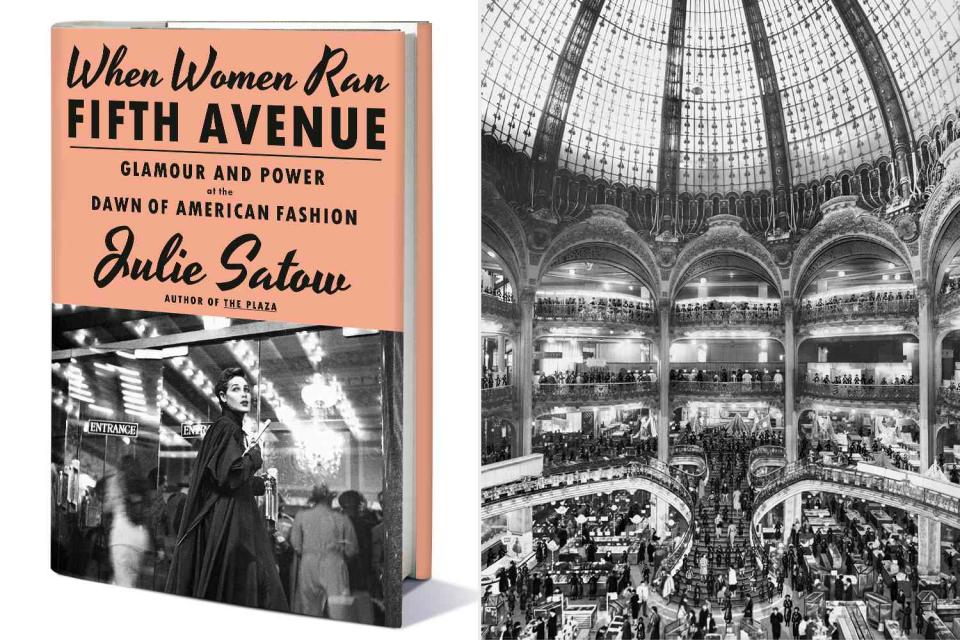
Doubleday; Roger Viollet via Getty
'When Women Ran Fifth Avenue' by Julie SatowDepartment stores used to be a true one-stop shop, and my new book takes readers through their doors once more.
During the early twentieth century, department stores were lands of glamour and possibility. In a single afternoon, you could have the details of a wedding (or funeral) planned; find out the dates for the civil service examinations; send a telegram at a Western Union outpost; drop your baby at the nursery to have a leisurely lunch at the tearoom, followed by an appointment at the hair salon; arrange for the express delivery of an ermine fur wrap to your home, or buy refrigerated steaks.
These were palatial wonderlands, with soaring ceilings, grand staircases and long counters featuring cosmetics, leather gloves, piles of ribbons and even delicious candies in rainbows of color.
In my new book, When Women Ran Fifth Avenue (out June 4), I take you inside this fashionable world and introduce you to the little-known women who were in charge. From their very inception, these were uniquely female universes, where women held sway, from the shoppers to the saleswomen and even the supervisors.
And within their ranks, three unheralded women beat the odds to rise to be presidents. Hortense Odlum took over Bonwit Teller in the depths of the Great Depression, turning the nearly bankrupted store into a retail powerhouse. Dorothy Shaver helmed Lord & Taylor in the postwar era, earning her the moniker of “America’s No. 1 Career Woman.” And in the 1960s, it was Geraldine Stutz’s turn, when the young fashion magazine editor was appointed president of Henri Bendel, transforming it into a destination where everyone from Capote’s Swans to Mick Jagger went to shop.
Below are a few more fascinating facts about these behemoths of commerce.
Mary Todd Lincoln Once Ran Up a Tab Her Husband Couldn't Pay
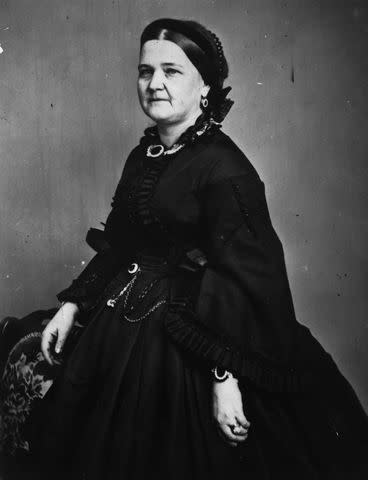
Mathew Brady/MPI/Getty
Mary Todd LincolnIn 1846, the merchant A.T. Stewart founded the Marble Palace in New York City, considered one of America’s first department stores. He became the country’s third-richest man after William Astor and Cornelius Vanderbilt, and among his clients was Mary Todd Lincoln.
A shopaholic, she spent the equivalent of $500,000 in today’s money in a single summer, a tab her husband, President Abraham Lincoln, could not repay.
A Gilded Age-era Oklahoma City Store Offered Babies for Adoption
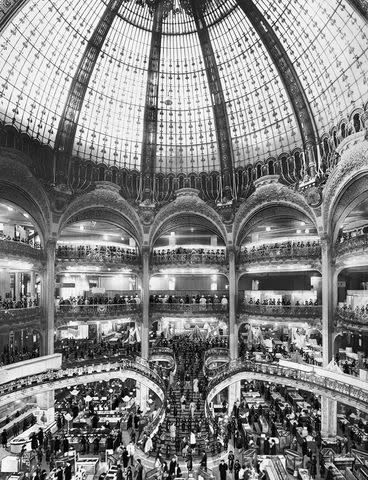
Roger Viollet via Getty
What a department store might have looked likeGilded Age department stores were miniature worlds, boasting fishponds with mechanical boats; children’s nurseries stocked with games and ice cream sundaes and pet departments boasting not only cats and dogs for sale, but also exotic birds and panther cubs.
One store in Oklahoma City even sponsored a “baby week,” offering nine infants for adoption—six lucky tykes found permanent homes.
Department Stores Had In-House Medical Care for Staff
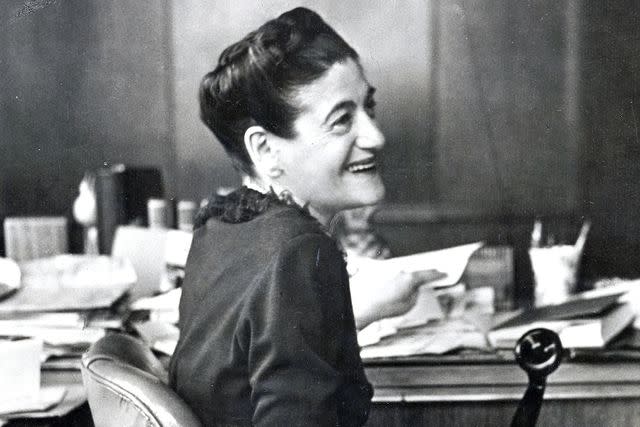
The Jewish Historical Society of Greater Hartford
Beatrice Fox AuerbachNew York’s Ladies Mile, which ran from Astor Place to Madison Square Park, was named for the crush of women who flocked there to partake in a new national pastime: window shopping. Women were not only shoppers but also found employment at the stores. In 1880, there were 8,000 store saleswomen and by 1890, there were 58,000. By 1920, more than half a million women worked in sales.
While the job of the saleswoman wasn’t easy, with long hours and onerous rules, such as the prohibition against sitting down (even when no customers were there to see them) they also enjoyed perks like free lunches, job training programs, exercise classes and even in-house hospitals, dentistry offices and staff chiropodists who cared for their tired, aching feet.
Artists Like Salvador Dalí Used to Create Window Displays
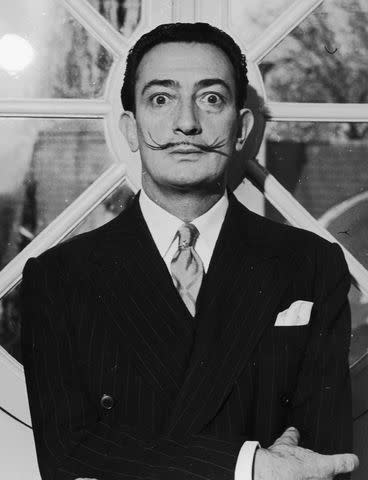
Hulton Archive/Getty
Salvador DaliL. Frank Baum, the author of The Wonderful Wizard of Oz, is often credited as the father of window displays. Before he wrote the famous children’s story, Baum published The Show Window, a monthly journal in which he advised store owners on how to display their merchandise.
Many famous artists created window displays, including the surrealist, Salvador Dalí. In a window for Bonwit Teller based on the Greek myth Narcissus, Dalí created a tableau that featured a mannequin covered in blood, stepping into a claw-footed bathtub half filled with dirty water. Emerging from within the bath’s grimy depths were 100 wax arms holding small mirrors.
The store, inundated with customer complaints over the gruesome images, removed the mannequin. When he found out, Dalí grew so enraged that he marched into the display and heaved the bathtub through the window, crashing it onto the crowded Fifth Avenue sidewalk below.
'The Marvelous Mrs. Maisel' and 'Mad Men' Found Inspiration There
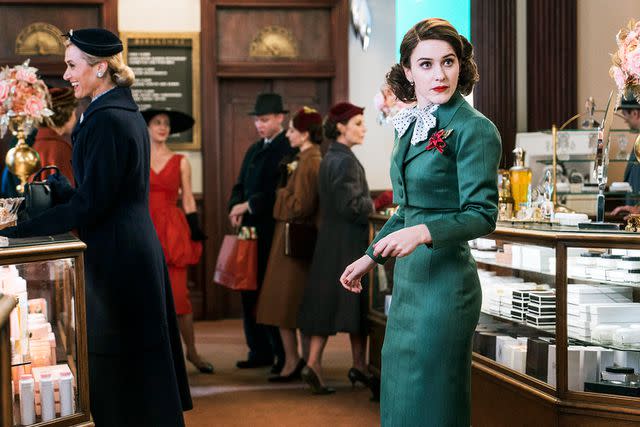
Nicole Rivelli/Prime Video
Midge in 'The Marvelous Mrs. Maisel'In The Marvelous Mrs. Maisel, Midge worked at the makeup counter at fashionable B. Altman’s, before getting demoted to the basement, where she toiled as a harried switchboard operator.
There’s also Rachel Menken, the glamorous president of Menken’s department store. In Mad Men, she was Don Draper’s love interest and according to some, “the one who got away.” She was based on the real-life Beatrice Fox Auerbach.
Single and Jewish, just like her television doppelganger, Beatrice ran G. Fox’s in Connecticut, the largest family-owned store in the country.
The Pilates Founder Taught at a Department Store Studio
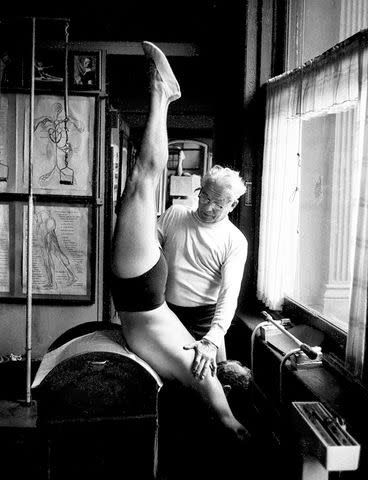
I.C. Rapoport/Getty
Joseph Pilates in 1961The first Pilates studio to open outside of Joseph Pilates’ original studio in Manhattan was at Henri Bendel’s. In the early 1960s, Geraldine Stutz, a fan of the exercise regimen, opened a Pilates studio at the department store, which became the go-to for models and fashionistas.
She even recruited Joseph himself to teach there in the mornings before he went to his own studio in the afternoons.
Donald Trump Tore One Down to Build Trump Tower
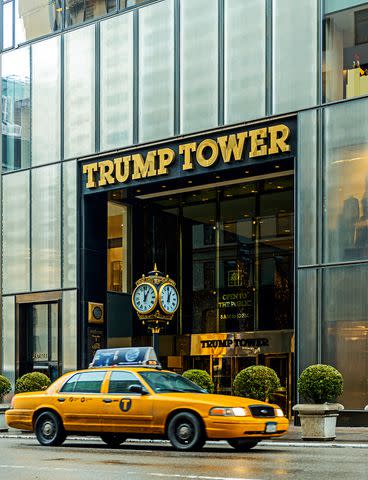
Ozgur Donmaz/Getty
Trump Tower in 2014In 1979, a brash, young real estate developer, Donald J. Trump, purchased the Bonwit Teller department store on Fifth Avenue with plans to demolish the structure to make way for a new 60-story condominium, Trump Tower.
The Bonwit Teller building included several architecturally significant Art Deco embellishments, including two bas-relief sculptures that Trump offered to donate to the Metropolitan Museum of Art. One afternoon, however, construction workers climbed the façade of the store and jackhammered the sculptures, destroying them.
Two Legendary Stores Closed in 2019
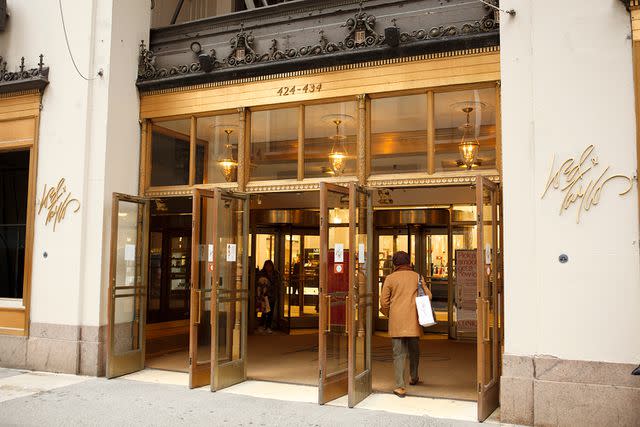
wdstock/Getty
Lord and Taylor in 2011In 2019, after 195 years in business, one of America’s oldest department stores, Lord & Taylor, closed its Fifth Avenue flagship location. It is now the New York headquarters for Amazon.
Several weeks after Lord & Taylor closed, Henri Bendel followed suit, permanently shuttering its doors.
For more People news, make sure to sign up for our newsletter!
Read the original article on People.


